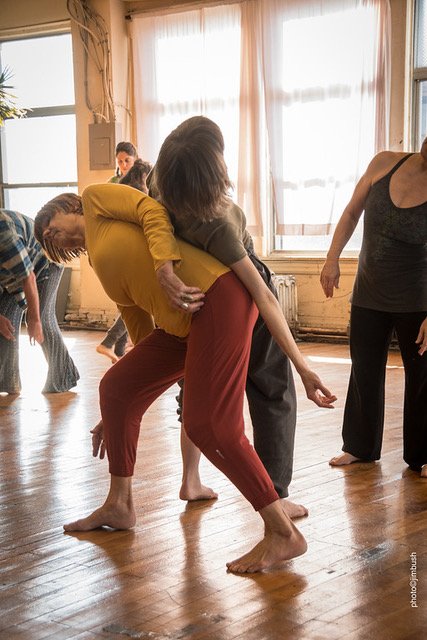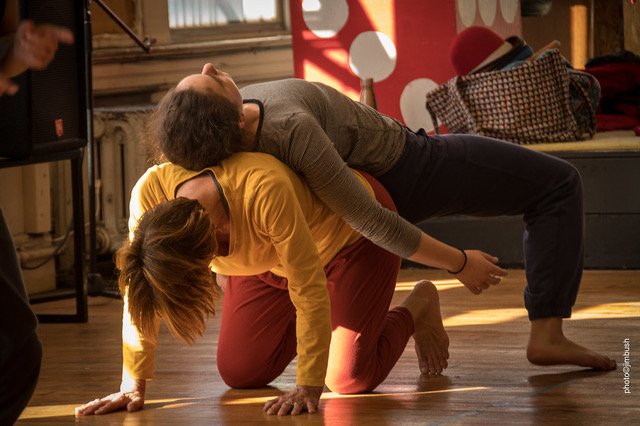February catchup
Exciting news from KCC to report soon! Details to follow in the coming months. So keep reading the newsletter… you don’t want to miss this!
Shall We Dance?
-Aukje Byker
I’ve always enjoyed dancing, but I’ve never been very good at following specific steps. What I like most is free form dancing. So I’ve enjoyed just plain boogying to music at any live music event and something called ecstatic or 5 Rhythms.
When I first moved to Peterborough, I already knew that there was a group here, called Dance Your Bones, that held weekly dances based on 5 Rhythms. I attended one of their dances the second week I was here. Although these dances are held in silence, at the end there is usually a sharing and also sometimes some announcements. That evening, someone announced that the dancing at the Holiday Inn was starting the following evening and all were welcome. I didn’t know these people, didn’t know anything about the Holiday Inn in Peterborough, but I showed up. It turns out that for many years, the Holiday Inn had live blues bands every Friday night during the summer and a small group of dancers went every week. I was welcomed by this group and through them also found out about other dance opportunities in Peterborough.
I met someone who was a CI dancer. What is that? A dance form called Contact Improvisational Dance, also called Contact Improvisation or CI. CI is a form of improvised partner dancing involving the exploration of one's body in relationship to others by using the fundamentals of sharing weight, touch, and movement awareness. That explanation, although very real, sounds rather dry. For me CI is about moving my body in relationship to another body and seeing what we can create together.
I was invited to try it and went for the intro lessons. I liked that there were no steps to follow, but that there were things to learn about doing it in ways that worked. Still it wasn’t until the following year when there was a CI workshop and dance held at Market Hall here in Peterborough, that I became hooked. I started driving to Toronto every so often to participate in a dance (called a “jam”) there and soon started going to workshops and other longer events in many different places.
CI jams are done in silence, so that you are concentrating on your movement, not on a conversation. Often there is no music as the “dance” is about connecting with your partner and what the two of you can create together. When there is music, it is usually improvisational music, with the musician following the dancers, rather than the other way around.
Often, when I’d go to these jams, I was one of the oldest people there and those who were close to my age had often been doing CI for years. As I watched many of these dancers gracefully lift each other or do other moves I knew I would never be able to do, I often questioned myself about what I was doing, trying to learn this at my age. But other dancers always reassured me that you dance with the body you have and any dance can be satisfying. I’ve seen people in wheelchairs participate, and I figured if they can do CI, so can I. The more classes I took, the more I learned about using the body I have. I learned that there were things I could do, that there were usually many different ways of doing something, and the more I knew the more choice I had.
CI dances have no actual structure for beginning or ending each individual dance. This can be challenging; there is also a lot of self-reflection that can happen. Asking someone to dance is done by just offering a slight touch, which if responded to, is a yes and if not, it’s a no. Shall I go ask that person over there to dance? Do I want to continue this dance, or end it? Why did my partner end this dance - is it because I’m not that good, or some other reason? All of this can be challenging,
What is it that I find so wonderful about CI? There is something about moving freely, finding all these different ways to move my body, to just roll over or under someone like I might have done as a child (but now knowing how to do it so I don’t hurt the other person) that I so enjoy.
One of the benefits of doing CI, at my age, is learning more effective and safer ways to use my body. For example, I’ve learned that there are many ways to get up off the floor and I experiment with different ways to get out of bed, or out of a chair. Now instead of thinking that I’m too old to learn CI, I think about how much CI is helping me as I age. So no, I can’t lift people very high, and I am not nearly as graceful as many others, but I enjoy it and really that’s all that counts.
Patterns of Ice
-Tsabia Siegel
The great photographer Edward Weston said “You should be able to look at your feet and see something to photograph.” I would agree with him as long as the light provides added interest. For me, photography is primarily about following the light. It is in the light that our ability to see is illuminated.
This winter season, while we housesit in Bayfield, on the eastern shores of Lake Huron, the skies have mostly been overcast. So other than a few glorious sunsets, there has been little inspiration for me to take pictures.
In the winter of 2021, it was a different story. While we were renting a house north of Kingston, the winter was sunny, snowy and cold. A few doors down from us, there was a farmer’s field that led two kilometres from the road to Collins Lake. It had a well-trodden path that we had permission to use. I was on that path almost daily, either skiing or walking, always with my trusty iPhone 11. There was one day; a particularly magical one with the sun low in the sky, that I spotted a creek that had frozen over. I spent hours hovering over it with my gloveless hands and the macro setting on my camera, capturing the patterns in the ice. This is a deeply fulfilling pleasure for me -- so much to see in a three-foot square patch of ice. I went out the next day, but it wasn’t the same. I had been gifted with a perfect moment.
Nature, the lay of the sun, and my camera have offered me some of the most memorable moments of my exploratory life.
Equity Member Interview – Linda Herold
Linda, just like her husband Arthur, is an (ex)hippie. Throughout her life, she has been into communal living in different manifestations. She loves the idea of cohousing; the seeds were planted early for her.
She grew up in the Montreal suburb of Ville St. Laurent – a quiet, predominantly Jewish neighbourhood. Her father was a travelling salesman of women’s clothing; this was great for her, as she could pick what she liked. Access to cheap clothes – every young woman’s dream! Her mother was the ultimate loving, stay-at-home mom; she is still alive and will soon be 99 (!). Linda was the eldest of 3; her sister was 4 years and her brother 6 years younger. Unfortunately, both died tragically; her sister committed suicide at 22 and her brother died of brain cancer at 48. Linda adored her grandmothers (Bubbes in Yiddish) and she, herself, is now a grandmother and likes being called Bubbe to keep her grandmothers’ memory alive. She loved summer camp and became a counsellor, enjoying sleeping in the bunks and all the communal meals. Communal living experience #1.
Linda went to McGill University and studied Psychology and Sociology. She applied to teacher’s college, but didn’t get accepted. Deciding to go on a journey of self-discovery, she moved to Vancouver with a couple of friends. She tried to get a job there, but couldn’t find work and went on welfare, living in a house she shared with draft dodgers and deserters. Communal living experience #2. She learned to bake bread, meditate and do yoga. At this point, she couldn't care less about a career and was more interested in following her heart. She became a hippie.
Her mother sent her money, and she used it to backpack through Europe, hitchhiking and working. She decided to go to Israel and lived on a kibbutz. Communal living experience #3. There was a lot of outdoor work which she loved – organic gardening and harvesting melons, cucumbers and artichokes. Everyone had a little apartment and had communal meals. She ended up living with the only non-Jewish guy on the kibbutz. He was from Chicago, and they left Israel after a year to live there. Travelling to work as a waitress, she was often the only white person on the bus, which felt uncomfortable and helped her understand what it felt like to be different.
Things were not going well with her boyfriend and she had heard about The Farm, a commune in Tennessee. At that time in her life she looked for signs: she threw the I Ching, a Chinese form of divination, and it said “go south”, so she went and joined The Farm at age 24. The people were friendly, she lived with many people in a house, and she thought it was heaven on earth. Communal living experience #4.
She met Arthur at a party. He had learned about electricity and did that for the farm. He invited her on a date to go to Nashville to buy electrical parts (how romantic!). Eventually, they got engaged. She didn’t have status in the U.S. and immigration was sniffing around, so they left for Montreal, where they were married in 1976. She said to her parents, “He’s got long hair, but at least he’s Jewish,” so they were pleased. They went back to The Farm to get married (by the founder Steven Gaskin) surrounded by friends. They had a Sunday service and meditation in a meadow and were married, along with (not to!) 7 other couples, that day.
Some Canadians were recruiting other Canadians to start a sister branch of The Farm in Lanark, Ontario and they joined in. They were like pioneers; no electricity (Arthur helped with that), and one log house at first. It was like camp; living and working with friends. They took a vow of poverty, as all Farm members did, and owned nothing. Communal living experience #5. It was a bit multicultural, as The Farm had helped rebuild Guatemala after the earthquake in 1976, and some Gautemalans had moved to the Lanark Farm.
Linda started a school at The Farm for the 9 kids living there; she visited a local alternative school to learn how to go about things. So she finally got to teach, as she had wanted earlier. It was fun; for example, they would collect wild berries and make jam together and she would use that as a math lesson. The Ministry of Education visited and said it all looked good. Finally, some kids went to regular school and the teachers commented on how the kids weren’t jaded; they enjoyed learning.
Linda got pregnant and had her son at the Tennessee Farm where there were midwives. They went back to Lanark and stayed 6 more years. As people got older, the community changed from a commune to a collective; they wanted to make their own choices and be responsible for their own incomes. Arthur turned out to be an entrepreneur and had a soy-based frozen dessert business. They left the Lanark Farm and moved to Toronto where they rented a house, which was quite a culture shock and felt strange. But they lived on a small street and the neighbours were great, so it was a nice transition. She got her certificate as an Educational Assistant.
Her parents were so happy they’d left the commune that they helped them buy a small house outside of Millbrook. After becoming an Accredited Life Skills Coach, she was hired at Sir Sanford Fleming College, to teach in a program for unemployed youth. They had always wanted more kids, but she couldn’t have more and so started a private adoption for a Guatemalan child. Before that could finish, she got breast cancer, and when she finished chemo in July, they got their daughter in August of 1993. Her daughter was 13 months old at the time and her son was 13.
She got a job at a community counselling agency. Now, in her 50’s, her career began. She designed and facilitated Personal Growth Groups for women in self-esteem, assertiveness training, managing stress and anger management. She did this for 15 years. She found it very rewarding.
So what is Linda doing now? She says, “When you’re older and retired, taking care of yourself is a part-time job.” She does yoga and meditation, cooks (mostly vegetarian), was in a choir before Covid, is learning to play the ukulele, likes camping, tennis, hiking, dancing, and has 3 garden plots. She became a member of the Unitarian Fellowship and is co-ordinator of the Refugee Settlement team there. Plus, she helps manage her mother’s life and keeps in close touch with her. Her son and his 2 daughters live in Peterborough and her daughter lives in London, Ontario with 1 daughter.
She had thought, when she retired, she would live with her buddies from the Lanark Farm – they are like family – but feels her community is in Peterborough now. She is very sure about cohousing – even though she has nice neighbours now, she knows it can be different. She would like a smaller, more energy efficient place to live and a simpler lifestyle, sharing common things and sometimes eating together. Communal living experience #6?!!
Wise words
Don't ask yourself what the world needs; ask yourself what makes you come alive. And then go and do that. Because what the world needs is people who have come alive.
-Howard Thurman





